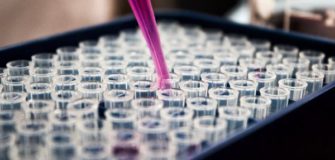HIV and TB laboratories facilitating COVID19 testing in Africa
Share
Many countries in resource-limited settings have high HIV, malaria, tuberculosis, hepatitis, and/or sexually transmitted infection (STI) burdens. In 2010, WHO first recommended the use of the Xpert MTB/RIF nucleic acid assay. In 2013, the WHO recommended HIV viral load testing through nucleic acid testing for all people living with HIV on antiretroviral therapy in order to monitor their treatment. Over the last ten years, significant investments by countries and donors have considerably improved laboratory systems.
Across sub-Saharan Africa, as of 2019, a total of 412 laboratories in 17 African countries were enrolled in the Stepwise Laboratory Quality Improvement Process Towards Accreditation (SLIPTA) program with 78 laboratories achieving accreditation in line with ISO standards. Through these efforts, the proportion of laboratories capable of nucleic acid testing in Africa has expand
Since the start of the COVID-19 pandemic, scaling up testing has been a critical component to identify, isolate, and trace suspected cases as efforts to reduce transmission and care for patients early. Through conducting over 10 million tests, countries in Africa have identified nearly 2 000 000 COVID-19 cases. In many countries, there has been a heavy reliance on the laboratory systems built and developed by HIV and TB programs.
In many settings, machines have been shared across programs as well as infrastructure, sample transport systems, and highly skilled staff. This has, however, caused some disruptions for HIV and TB testing. Highly skilled staff were often re-prioritized to COVID-19 testing, reagents were sometimes re-purposed for COVID-19, HIV and TB testing may have been de-prioritized, and overall reductions in services available due to lockdowns, reduced facility attendance, and stigma.
Fortunately, in some cases the disruptions have been temporary and critical tests have seen volumes rebound; however, it will be essential for disease programs to work together and integrate systems to ensure the needs of each can and are being met consistently, while the national response to the pandemic is managed.
Antigen-based rapid diagnostic tests (RDT) for COVID-19 are now available to supplement national testing strategies. They are cheaper than molecular tests, easier to use, and can provide results within 30 minutes, allowing expanded access to testing, particularly where nucleic acid testing may not be available or testing and result return turnaround times are lengthy. As countries have begun to procure these tests, they will likely continue to leverage the existing services that support RDT testing already in country, especially those established by HIV and malaria testing networks. This includes human resources already trained to conduct testing, supply chain systems, community outreach, quality assurance mechanisms, mentorship practices, etc.
Moving forward, integrating and sharing technologies as well as the supportive systems will create a more responsive, supportive, and efficient overall patient-centric diagnostic network. However, it remains essential to continue to support and scale-up case-finding and testing services for HIV, malaria, and TB.
Based on a city where the mountain meets the sea and where antique houses line the streets, my mind is free to wonder, to wander and to write.




